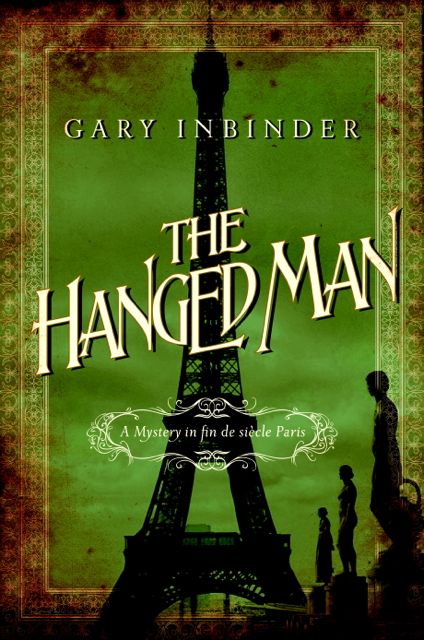Gary Inbinder, The Hanged Man
reviewed by Charles C. Cole

The Hanged Man Publisher: Pegasus Books, Aug. 9, 2016 Length: 352 pp ISBN: 9781681771649 |
Like the intrepid detective he created in The Devil in Monmartre, Gary Inbinder has done it again! His first Inspector Lefebre story was an origins piece, introducing bygone Paris and detailing the malformities of Toulouse-Lautrec, along with the underappreciated benefits of up-and-coming forensics.
Now we “get it.” Now we can quickly visualize our honest cop, out-of-the-box “Professor” making a name for himself through old-fashioned detective work — spies, disguises, and tailing a suspect — and relatively unproven technology.
Oh, it doesn’t hurt our hero’s image that a local journalist appears to echo newspaper editor Maxwell Scott in The Man Who Shot Liberty Valance (1962): “When the legend becomes fact, print the legend.”
While the first case was a simpler “whodunit” and “will they do it again” that allowed us to sit in on intimate conversations with the bad guys, which flesh them out and humanize them, this case is about do-or-die urgency, with unexpected and rather pitched international stakes. Many times this reader could see parallels between certain attitudes of THEN and NOW. Anarchists who disagree with national government and want to blow things up “just because.” Who did it? But, more importantly, what was the motivation? Figure that out, and the rest will follow.
So many interesting and colorful characters you will want to revisit, such as the detective’s mother-in-law, the elderly idealist, the Dirty Harry-like results-oriented associate. And, unlike a brilliant detective from across the Channel, who seems to waste effort and time by working outside the system, Lefebre has a mostly-crack team at his disposal, and he’s willing to let them do the dirty work — and I do mean filthy!
I felt I was reading Manhunt: The 12-Day Chase for Lincoln’s Killer, only this time I didn’t know the ending before I opened the book. A real page-turner. Bravo!
Copyright © 2016 by Charles C. Cole

